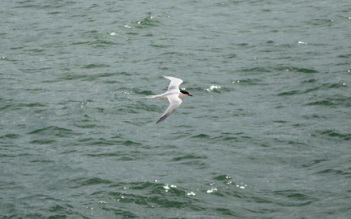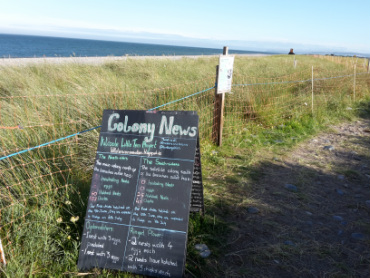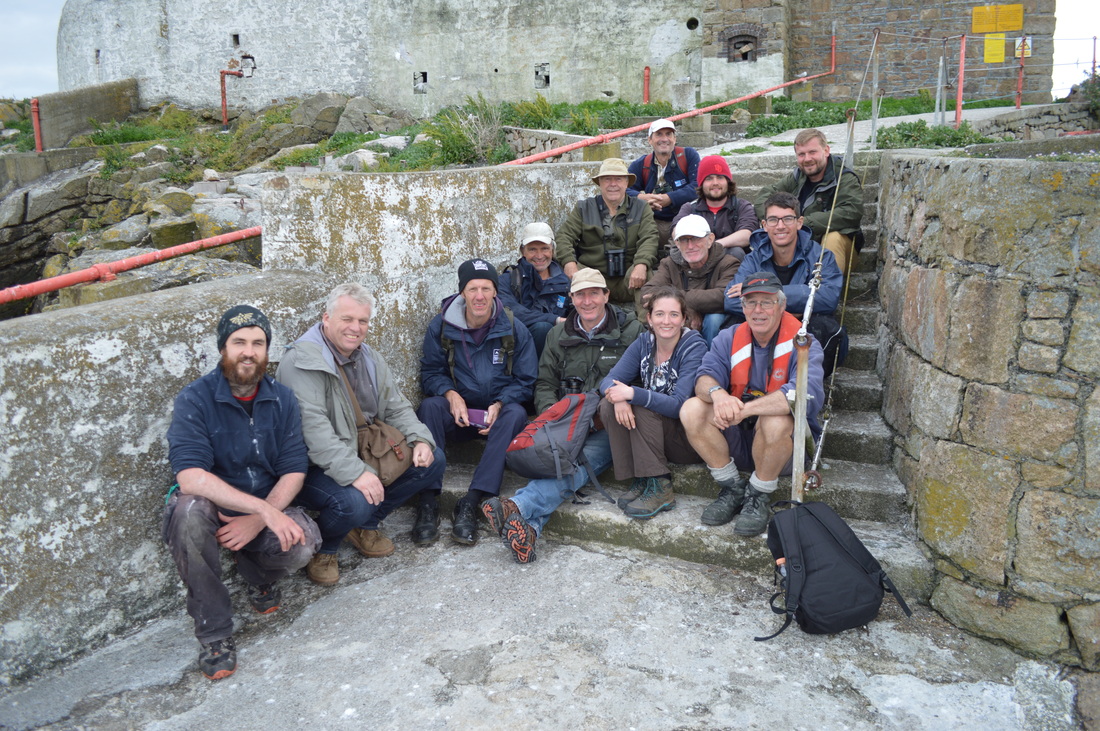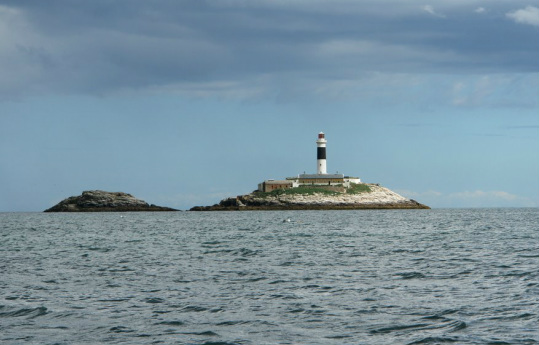 Roseate Tern (c) C Macleod-Nolan Roseate Tern (c) C Macleod-Nolan Like many migrating birds, roseate terns know no boundaries. This is what makes it is so important that the Roseate Tern LIFE project is a partnership covering multiple sites in different countries united in the aim to protect and expand the roseate tern breeding range in Britain and Ireland. Last week was a great example of international working with Daniel Piec and Chantal Macleod-Nolan, who are overseeing and coordinating the LIFE project on behalf of the RSPB, crossing the Irish Sea and visiting the project sites. Our first stop was Larne Lough in Northern Ireland where we were welcomed and met the warden and RSPB staff who are monitoring the area. Our resulting discussion was very insightful and along with actually seeing the site gave us with a much clearer understanding of how the site works and the breeding terns are doing this year. Throughout the visit we had some lovely sightings of fledgling Sandwich terns, common terns, black-headed gulls and black guillemots. Unfortunately with only one pair breeding at Larne Lough last year, roseate terns in Northern Ireland are facing extinction - making the support and funding the recovery project provides very important!  Lady's Island Lake in the mist (c) C Macleod-Nolan Lady's Island Lake in the mist (c) C Macleod-Nolan It was a misty start, but the weather improved and the next place to visit was Lady's Island Lake in the Republic of Ireland. It supports the second largest breeding colony of roseate terns in Ireland along with many other nesting birds including good numbers of Sandwich terns and common terns, which were busy returning with sand eels in their bill for their young. The site is managed by National Parks and Wildlife Services and it was great to hear that they have 202 pairs of roseate terns nesting there this year!  Kilcoole Little Tern Colony (c) C Macleod-Nolan Kilcoole Little Tern Colony (c) C Macleod-Nolan On our travels heading north we passed and dropped in to visit Kilcoole Little Tern Colony. Last year they had 155 nests, but how had they fared this year? Had they been affected by any factors that affect roseate terns as well? This year they had hatched 85 nests with 154 chicks, however the wardens have observed fox predation and poor food availability. The season is not over yet though and the site is currently still active (good numbers of little terns were flying about when we were there!). If you are interested in reading more about it, check out their blog: http://littleternconservation.blogspot.co.uk/  Dalkey Island (c) C Macleod-Nolan Dalkey Island (c) C Macleod-Nolan Dalkey Island was next and as we mentioned in a previous blog it is an important area for roosting roseate terns with intermittent breeding attempts. We were eager to meet with the new Dalkey warden (BirdWatch Ireland) and discuss how the nesting Arctic and common terns were faring this year and if any passing roseate terns had shown an interest in the newly placed nest boxes. Understanding the pressures these nesting terns are facing is important and if they are doing well, it may attract roseate terns who have a preference for nesting among other tern species. It was also nice to hear about how Tuesday's Dalkey Tern Watch have been going - great 'tern' out if you can pardon the pun!  Roseate Terns (c) C Macleod-Nolan Roseate Terns (c) C Macleod-Nolan Last but definitely not least was Rockabill Island, home to the largest roseate tern colony in North West Europe. This year they have 1556 roseate tern nests! We were joined on this trip by wardens and staff from a number of Tern colonies in Northern Ireland and Wales (RSPB & NWWT) and were shown around by Rockabill warden Brian Burke (BirdWatch Ireland): http://rockabillterns.blogspot.co.uk/. In addition earlier in the week Rockabill Island also hosted the RSPB wardens from Coquet Island, England as well. With added funding from the project, the wardens were able to start slightly earlier and prepare for the season controlling the vegetation and providing terns with more nesting opportunities! Currently the wardens are busy monitoring the nesting terns, observing predation and undertaking provisioning studies. I would like to thank all the wardens and staff who took the time to show us around their sites. Not only was it a fantastic opportunity to observe breeding roseate terns and their interactions, but all of these site visits and informal discussions are incredibly important with each site having their own intricacies and management approaches regarding their different breeding species, disturbance and predators. Exchanging knowledge and experiences potentially offer new solutions and allow us to return to our own sites/offices with renewed eagerness to continue protecting these rare birds!!!
0 Comments
 Roseate Tern (c) BirdWatch Ireland (photo taken under NPWS license) Roseate Tern (c) BirdWatch Ireland (photo taken under NPWS license) Located 7km off the County Dublin coast, the island of Rockabill is an internationally important site for Roseate Terns since it supports over 80% of its north-west European population!! It also supports other important and stunning breeding seabirds including common tern, Arctic tern, kittiwake and black guillemot. The island is managed by BirdWatch Ireland and no landing is permitted in order to limit disturbance to these sensitive nesting birds. There is a small team of dedicated wardens who live on the island monitoring these seabirds for the entire breeding season. Recently they have just completed their full nest census which took two days to completed! This meant checking out all the nest boxes including nooks and crannies for nesting pairs and eggs. "Their hard work has paid off with a fantastic count total of 1,556 Roseate Tern nests on Rockabill which is increase of over 150 nests from last year. Such a big increase further cements Rockabill's status as the largest Roseate Tern colony in Europe and is down to a lot of hard work from all of the wardens and Birdwatch Ireland staff who have worked here over the years." "Around 700 of those 1556 nests are in nestboxes, again proving their value and importance to the species continued growth. We got around 100 new nestboxes this year thanks to funding from the EU LIFE project, and will hopefully continue to add more and more in the coming years." All this information is from their regularly updated 'Rockablog' which will enthrall you with the tales of these stunning birds - check it out! http://rockabillterns.blogspot.co.uk/2016/06/rockabill-roseate-tern-count-2016.html |
More Blogs to Read
AuthorThis blog is maintained by various people from the project team. Archives
August 2020
Categories
All
|
Roseate Tern LIFE Project is supported by the LIFE Programme of the European Union
LIFE14 NAT/UK/000394 ROSEATE TERN
LIFE14 NAT/UK/000394 ROSEATE TERN





 RSS Feed
RSS Feed